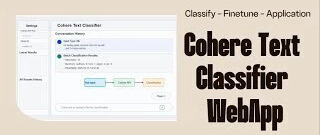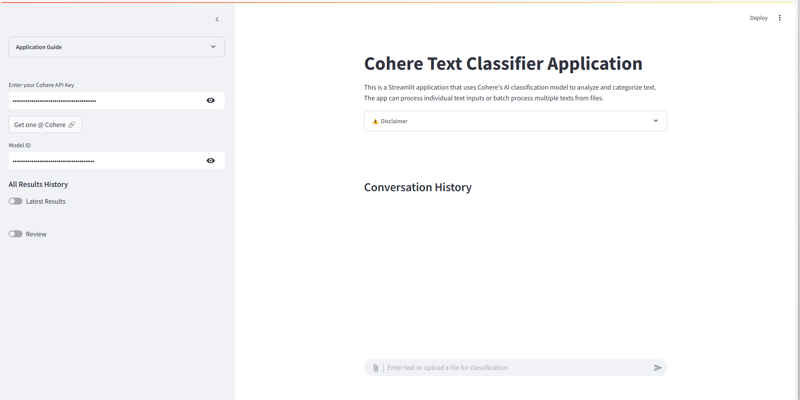Final part of series on leveraging AI for emotional intelligence
In our previous posts, we explored how to train a custom AI model for recognizing emotions in text. Now, we're taking the next step: building a user-friendly web application that turns our powerful backend model into a tool anyone can use—no coding required.
From Code to Clarity: Making AI Accessible
While AI models are incredibly powerful, they often remain locked behind complex APIs and code. Our goal is to bridge this gap with a Streamlit application that provides an intuitive interface for our emotion classification model.
This application allows users to:
- Input text directly or upload files containing multiple entries
- Process up to 50 text items simultaneously
- View immediate classification results and track historical analyses
- Export results for further processing or reporting
How It Works: The User Journey
Let's walk through the typical user experience:
- Setup: Users provide their Cohere API key and optionally specify a custom model ID (in our case, our fine-tuned emotion classifier)
- Input: Users can type directly into the chat interface or upload files (TXT, CSV, Excel)
- Classification: With a single click, the application sends the text to our model and retrieves emotional insights
- Results: The app displays both individual classification details and summary statistics
- History: All results are saved with timestamps for future reference
The Technical Magic Behind the Scenes
Our application is built on Streamlit, a Python framework that makes it easy to create data applications. The core functionality revolves around:
Flexible Input Processing
def process_file_content(file_input):
"""Extract text content from uploaded file."""
# Code determines file type and extracts text accordingly
if file_name.endswith('.txt'):
# Process text files
elif file_name.endswith('.csv'):
# Process CSV files
# etc.
This function handles various file formats intelligently, extracting text that can be fed to our emotion classifier.
Seamless AI Integration
The application connects to Cohere's API with minimal code:
response = co.classify(
inputs=string_inputs,
model=model_id
)
This single function call sends our text to the fine-tuned model and returns structured classifications.
Intelligent Results Management
Results are organized into both immediate displays and historical records:
# Create results dataframe with full original text and timestamp
batch_results = [
{
'text': item.input,
'prediction': item.prediction,
'confidence': round(item.confidence, 4),
'timestamp': current_time
}
for item in response.classifications
]
From Raw Text to Emotional Intelligence
What makes this application powerful is how it transforms simple text into emotional insights. For example, a customer service team might upload hundreds of support tickets and quickly identify:
- Tickets expressing frustration that need immediate attention
- Overall emotional trends in customer communications
- Specific product features that trigger negative emotions
- The emotional impact of recent company changes or announcements
Building Your Own Text Classification Interface
Want to create a similar application? Here's what you'll need:
- A Cohere API key - Sign up at cohere.com
- A fine-tuned model - Either train your own (see our previous post) or use Cohere's pre-trained options
- Basic Python knowledge - To understand and modify the Streamlit code
-
Streamlit - Install with
pip install streamlit
The full code for this application is available in our GitHub repository.
While we've focused on emotion detection, this same interface can be adapted for:
- Content moderation (identifying inappropriate text)
- Customer intent classification (purchase interest, support needs, etc.)
- Document categorization (automatically sorting documents by type)
- Language detection (identifying which language is being used)
Conclusion: Democratizing AI Access
The true power of AI isn't just in its capabilities but in its accessibility. By creating user-friendly interfaces like this Streamlit application, we make sophisticated emotional intelligence available to everyone in an organization—not just the data science team.
Build something cool today! 🚀🚀🚀




Top comments (0)